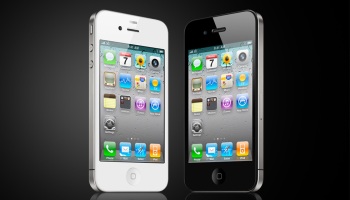iPhone Jumps Into Top Tier Of Mobile Phone Rankings

A new report has found Apple’s iPhone for the first time joining the top group of global mobile phone sales
Apple, Research In Motion and Android phone producers such as Samsung put in strong performances during a third quarter that showed smartphone sales to be very much dictating the global handset market. The handset market also seems to be rewarding phone vendors that are constantly innovating and producing the strongest possible portfolio of smartphones.
The launch of the iPhone 4 helped Apple, according to 28 October reports from research firms IDC and Strategy Analytics, join the list of top-five performers for the first time. Apple, like competitor RIM, only contributes smartphones to the handheld market, and both vendors posted highest-growth rates among the top five vendors during the quarter.
Nokia learns a lesson
“The mobile phone makers that are delivering popular smartphone models are among the fastest-growing firms,” Kevin Restivo, an IDC senior research analyst, said in a statement. “Vendors that aren’t developing a strong portfolio of smartphones will be challenged to maintain and grow market share in the future.”
 Nokia has learned this lesson well. While the long-time market leader, Nokia saw its volumes grow below the market average for the ninth consecutive quarter, despite posting “record smartphone shipments of 26 million units,” according to Strategy Analytics. Looking to again be a serious smartphone contender, Nokia has introduced four high-end models, the N8, C7, C6-01 and E7, which it hopes will significantly impact its fourth quarter.
Nokia has learned this lesson well. While the long-time market leader, Nokia saw its volumes grow below the market average for the ninth consecutive quarter, despite posting “record smartphone shipments of 26 million units,” according to Strategy Analytics. Looking to again be a serious smartphone contender, Nokia has introduced four high-end models, the N8, C7, C6-01 and E7, which it hopes will significantly impact its fourth quarter.
“The N8, C7 and C6-01 will be attacking Sony Ericsson, LG and Samsung, while the E7 will set its sights on RIM, HTC and others,” wrote analyst Neil Mawston, author of the Strategy Analytics report.
LG Electronics, Mawston points out, saw shipments shrink 10 percent compared to a year ago, and “like Motorola and Sony Ericsson before it, has missed much of the boom in premium 3G smartphones”, causing it “financial pain”. As competitors such as Samsung begin releasing 3G tablets, Mawston warned, “LG must be careful not to repeat this error”.
Samsung, with its line of Galaxy S smartphones and Galaxy Tab tablet, was quick to jump on the Android craze, and consequently shipped 71.4 million units during the quarter – an all-time high for the company. It also more than doubled the number of converged mobile devices, or smartphones, it shipped. During the fourth quarter, it will bring still more smartphones to market, though its Wave 2 will launch with Bada, its in-house OS.
IDC estimated that the global handset market grew 14.6 percent during the quarter, with a total of 340.5 million shipments, which Strategy Analytics put the figure slightly lower, at 327 million.
Again, according to IDC, market leader Nokia shipped 110.4 million handsets, to claim 32.4 percent market share and was followed by Samsung, with shipments of 71.4 million units for 21 percent market share. Third-place LG shipped 28.4 milion units, for 8.3 percent of the market, and Apple, jumping ahead of RIM to claim fourth position, shipped 14.1 million units to claim 4.1 percent market share – and post a remarkable 90.5 percent year-on-year growth.
Second-tier players
Fifth-place RIM, with 3.6 percent of the market, shipped 12.4 million units, for a year-on-year growth of 45.9 percent. While IDC reports that RIM shipped a record number of units during the quarter, and showed particular growth in Latin America, in the United States, Strategy Analytics highlighted that its “relatively weak touchphone portfolio for consumer users” has challenged the company, particularly following a lukewarm response to the Torch.
With its fellow top vendors, RIM will need to proceed smartly though the fourth quarter or risk being chucked off the list.
“There is a long tail of second-tier players emerging who are knocking on the doors of the top five players,” Strategy Analytics’ Mawston warned. “ZTE, Sony Ericsson, Motorola, Huawei and Alcatel are all shipping volumes that are within touch distance of the leading group.”
ZTE in particular is growing at an above-average rate, Mawston noted, and “stands a good chance of entering the top five in coming quarters.”